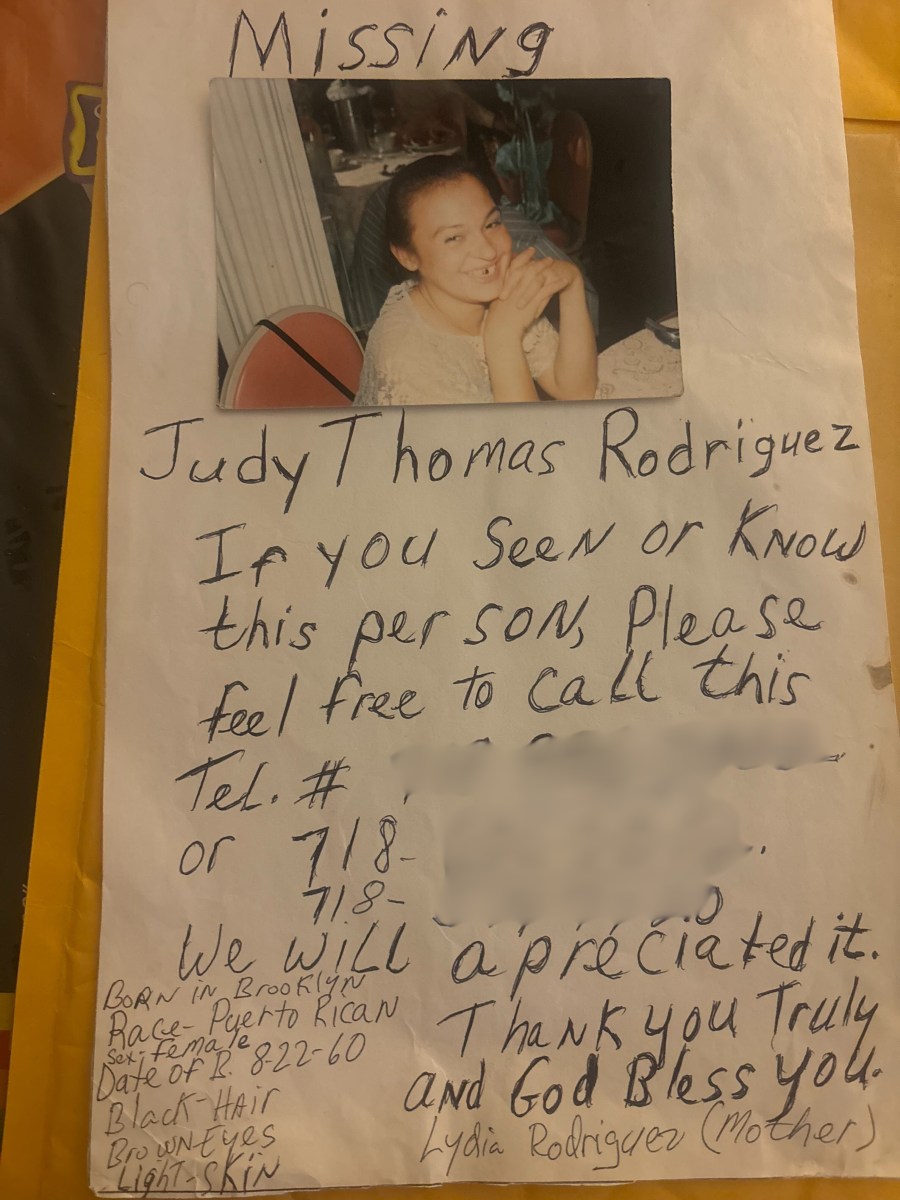The victim in a Queens cold case homicide has finally been identified more than three decades after her body was discovered in a grassy area along the Cross Island Expressway near Cambria Heights in August 1991, Queens District Attorney Melinda Katz announced Monday.
Advanced DNA testing revealed the body of the murder victim, found with her ankles bound with a cord and covered with a large wooden board, was Judy Rodriguez, who was reported missing by her family shortly after being last seen on Jan. 23, 1991, at her daughter’s first birthday party.
Four men were prosecuted and convicted in 1992 and 1993 for their roles in the killing, but the victim’s identity remained unknown.
“Three decades ago, four men were convicted for a gruesome killing of an unidentified woman,” Katz said. “Though justice was served, the family went 33 long years without any answers about their loved one.”
According to the original charges and the investigation, the four men, ages 18 to 20, approached the victim sometime between July 15 and Aug. 15, 1991. The men proceeded to drive Rodriguez, who was 31 years old at the time, to an area where the Cross Island Parkway and Southern State Parkway merge into the Belt Parkway in Southeast Queens between Cambria Heights and the border of Nassau County.
During the drive, two men bound the victim’s ankles with a cord. Once they arrived at the location, the men pushed her body out of the car, and one of them exited the car and struck Rodriguez on the head with a large metal flashlight, causing her death. The foursome then drove away. Approximately two weeks later, the four men returned to the crime scene and attempted to conceal her body by placing a large wooden board over Rodriguez.
On Aug. 23, 1991, police received a call reporting a dead body at the parkway intersection. The responding officers discovered the victim under the board but were unable to establish her identity because her body was severely decomposed. The homicide investigation was launched, and the four men were arrested and charged approximately one week later.
One of the defendants pleaded guilty in September 1992 to manslaughter in the first degree and received a sentence of 8 1/3 to 25 years in jail. He was released in 2009 and discharged from parole in August 2016. Two others pleaded guilty in October 1992 to reckless endangerment in the first degree and received a sentence of 2 1/3 to seven years in prison. They were released in 1996 and discharged from parole in April 1998. A fourth defendant pleaded guilty in February 1993 to hindering prosecution and received a sentence of 1 ½ to 4 ½ years in prison. He was released in 1996 and discharged from parole in July 1997.
In November 2023, the Queens DA’s Cold Case Unit and the NYPD sought the assistance of a private laboratory to help generate leads to the unknown victim’s identity. In April, DNA Labs International used advanced DNA testing to produce a comprehensive genealogical profile from the skeletal remains. The genealogical profile was uploaded to public databases. The results were given to Detective Joseph Rodriguez of the NYPD’s Investigative Genealogy Squad, who built a family tree and turned over an investigative lead to the Queens DA’s Office and the NYPD’s Cold Case Squad. Investigators contacted potential family members of the victim and obtained DNA samples for comparison to the discovered remains.

Through their combined efforts, investigators confirmed that the remains belonged to 30-year-old Judy Rodriguez, whose disappearance coincided with the first birthday of her daughter, Stephanie Rodriguez, who was later raised by her grandparents, who have since died. In addition to her daughter, Judy Rodriguez had two other children and three siblings.
“Thanks to our partners at the NYPD and the Office of the Chief Medical Examiner, we have now provided those crucial details, which I hope can bring a measure of solace,” Katz said. “This case is a prime example of the determination of my Cold Case Unit in identifying victims and solving the borough’s oldest, most challenging homicides.”
The Cold Case Unit currently has 47 homicide victims who have yet to be identified. Earlier this year, U.S. Rep. Grace Meng secured a half-million dollar grant for advanced DNA testing and genealogical investigations by the Queens DA’s Cold Case Unit, which will be used to obtain such answers for other families.
“As I have said, it is never too late for justice, and the $500,000 I secured for the DA’s Cold Case Unit will go a long way towards investigating and prosecuting local cold cases and providing answers and closure for families,” said Meng.
Since then, the Cold Case Unit has initiated genealogy investigations into 14 cases involving unidentified human remains.
“This latest case from 1991 underscores why this money is so important, and it’s an example of the types of cases it will be used to solve,” Meng said. “I’m proud to work with District Attorney Katz in pursuing justice for the victims of cold cases in Queens, and I continue to stand with her in never forgetting about them or their loved ones.”
